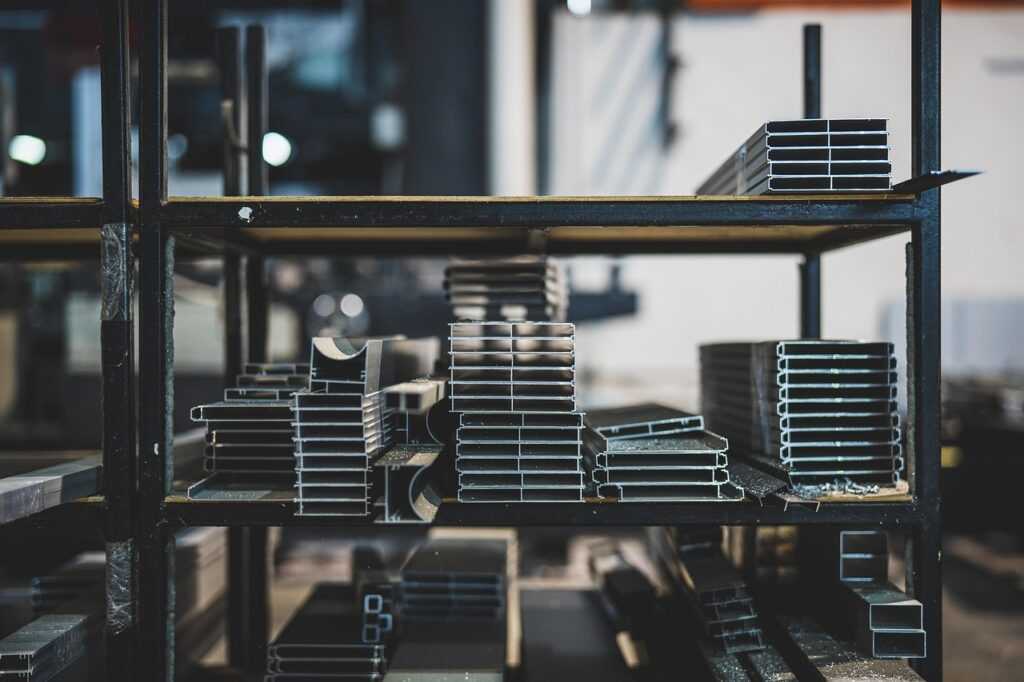Aluminum CNC machining has become an essential part of modern manufacturing, providing precision, efficiency, and versatility. As industries demand more complex components with tighter tolerances, the role of CNC machining in aluminum fabrication continues to grow. However, with rising material and operational costs, finding cost-effective strategies without compromising quality is a priority for manufacturers and clients alike. This article explores practical, actionable methods to reduce expenses and enhance efficiency in aluminum CNC machining services, focusing on how businesses can optimize processes to deliver value-driven results.
Understanding Aluminum CNC Machining
CNC (Computer Numerical Control) machining involves the use of automated tools controlled by computer programming to produce complex parts with high precision. Aluminum, due to its light weight, strength, corrosion resistance, and machinability, is a popular material choice across aerospace, automotive, electronics, and consumer products industries.
Machining aluminum involves several steps such as cutting, drilling, milling, and turning, often requiring multi-axis CNC machines to achieve intricate designs. The precision and repeatability of CNC machining make it the preferred choice for both prototyping and mass production. However, balancing quality, speed, and cost remains a challenging equation for many manufacturers.
The Importance of Cost Efficiency in Aluminum CNC Machining
In a competitive market, cost efficiency can determine the sustainability and growth of a machining service provider. For clients, minimizing production costs without sacrificing quality translates to better pricing, faster time-to-market, and higher profitability. For manufacturers, optimizing machining operations means better resource utilization, reduced waste, and increased throughput.
Cost-effective strategies involve a blend of smart design practices, advanced technology, process optimization, and vendor partnerships. When implemented well, these approaches can significantly cut down production time, material waste, and labor costs, resulting in a more competitive offering.
Leveraging Advanced Technologies for Cost Reduction
One of the cornerstones of cost-effective aluminum CNC machining is the adoption of modern machining technologies. Rapid Axis, a prominent name in the field of CNC machinery, has been instrumental in providing high-performance machines that enable precise, fast, and reliable aluminum machining.
By utilizing CNC machines from providers like Rapid Axis, manufacturers gain access to equipment with superior rigidity, accuracy, and multi-axis capabilities. These features reduce the need for secondary finishing operations, shorten cycle times, and improve the overall quality of machined parts. Advanced CNC systems also allow for the integration of smart sensors and automation, which can monitor tool wear and machine conditions in real-time, reducing downtime and preventing costly errors.
Designing for Manufacturability
Design decisions made during the product development phase can have a profound impact on machining costs. Designers and engineers must collaborate closely with CNC machining specialists to create parts that are both functional and economical to produce.
Simplifying complex geometries, minimizing tight tolerances where possible, and reducing the number of machining setups can drastically lower production expenses. For example, using standard hole sizes, avoiding deep pockets, and incorporating features that are easier to machine will shorten machining time and reduce tool wear.
Another cost-saving measure is to design parts that maximize the use of standard aluminum stock sizes. This reduces the amount of material that must be cut away and lowers waste. Efficient nesting of parts during machining can also lead to material savings.
Material Selection and Management
Choosing the right aluminum alloy is another critical factor in cost management. While high-performance alloys like 7075 or 2024 offer superior strength and corrosion resistance, they are often more expensive and harder to machine than common alloys like 6061 or 5052. Depending on the application, opting for a more machinable and cost-effective alloy can save significant expenses.
Proper inventory management also plays a role. Overstocking material ties up capital and increases storage costs, while last-minute orders can lead to premium prices and delays. Establishing reliable supply chains and working with trusted vendors like Rapid Axis ensures timely delivery and access to quality raw materials.
Optimizing Tooling and Machining Parameters
Cutting tools are a major expense in CNC machining, especially when working with aluminum, which can cause rapid tool wear if not properly managed. Using high-quality carbide or coated tools designed specifically for aluminum can extend tool life and improve cutting performance.
Machining parameters such as spindle speed, feed rate, and depth of cut must be optimized for each job to maximize efficiency. Manufacturers can employ software simulation and analysis tools to fine-tune these settings before production starts, reducing trial-and-error time and preventing tool breakage.
Routine maintenance and calibration of machines ensure consistent performance and prevent costly breakdowns. Some CNC systems from Rapid Axis feature automated tool changers and in-process quality checks, which help maintain optimal machining conditions.
Streamlining Workflow and Automation
Integrating automation into aluminum CNC machining processes offers considerable cost-saving benefits. Automated material handling, robotic loading and unloading, and CNC program optimization reduce manual labor requirements and improve cycle times.
Implementing workflow software that integrates CAD/CAM design, production scheduling, and quality control enables manufacturers to monitor progress and identify bottlenecks in real-time. Such systems help coordinate different stages of production seamlessly, minimizing downtime.
Moreover, using a single machine capable of multiple operations, such as 5-axis CNC machining centers, can reduce the need for transferring parts between different machines. This consolidation lowers setup time and reduces handling errors.
Quality Control and Inspection
Quality assurance is essential to avoid costly rework and scrap. Incorporating in-process inspection methods using CNC machines equipped with probing systems or vision systems helps detect defects early. This approach allows for immediate corrective action, saving material and labor costs.
Outsourcing quality control to third-party inspection services can add overhead costs and delays. Investing in advanced metrology tools and training in-house staff ensures faster turnaround and improved product quality.
Building Strong Supplier and Client Relationships
Establishing trust and communication between manufacturers, suppliers, and clients is key to cost-effective aluminum CNC machining. Transparent discussions about design, tolerances, lead times, and pricing expectations lead to better project planning and fewer surprises.
Long-term partnerships with suppliers like Rapid Axis can lead to volume discounts, preferential pricing, and access to the latest technology. Clients benefit from consistent quality and reliability, while manufacturers enjoy stable business and operational predictability.
Sustainability and Waste Reduction
Environmental responsibility also aligns with cost savings. Minimizing scrap aluminum through precise programming and using recycling programs reduces raw material costs and disposal fees.
Adopting energy-efficient CNC machines and optimizing cutting strategies to reduce power consumption contribute to lower operational expenses. These practices not only benefit the environment but also enhance the company’s reputation in the marketplace.
Case Study: Implementing Cost-Effective Strategies with Rapid Axis
A mid-sized manufacturing company recently upgraded its aluminum CNC machining operations by incorporating Rapid Axis CNC machines. The switch enabled the company to achieve faster cycle times thanks to the machines’ rigidity and advanced control systems. With multi-axis machining capabilities, they consolidated processes previously requiring multiple machines.
By collaborating with Rapid Axis experts, the company refined its product designs for manufacturability, resulting in parts that required fewer setups and easier tooling. The supplier also provided training on optimal machining parameters and helped implement automation solutions for material handling.
Over six months, the company reported a 20% reduction in production costs and a 15% increase in throughput. Waste material was reduced by 10%, and the improved quality control processes minimized rework. This example illustrates how combining smart technology choices with process improvements leads to tangible cost benefits.
Conclusion
Cost-effective aluminum CNC machining services are achievable by combining advanced technologies, smart design, optimized tooling, and streamlined workflows. Companies that leverage reliable CNC machine suppliers like Rapid Axis gain access to high-quality equipment and expertise, enabling them to produce precise parts efficiently and economically.
Manufacturers who prioritize collaboration, quality control, sustainability, and automation will be well-positioned to meet growing market demands while keeping costs in check. As industries continue to innovate, adopting these cost-saving strategies ensures that aluminum CNC machining remains a competitive and valuable manufacturing solution.

 Chief Operations Officer (COO)
As Chief Operations Officer, Ava Brodribb ensures that all aspects of the company's operations run smoothly and efficiently. With a keen eye for detail and a commitment to operational excellence, Ava oversees daily business activities, manages resources, and leads cross-functional teams to achieve the company’s goals. Her background in project management and operational strategy has been instrumental in driving the company’s success and maintaining its competitive edge in the marketplace.
Chief Operations Officer (COO)
As Chief Operations Officer, Ava Brodribb ensures that all aspects of the company's operations run smoothly and efficiently. With a keen eye for detail and a commitment to operational excellence, Ava oversees daily business activities, manages resources, and leads cross-functional teams to achieve the company’s goals. Her background in project management and operational strategy has been instrumental in driving the company’s success and maintaining its competitive edge in the marketplace.
